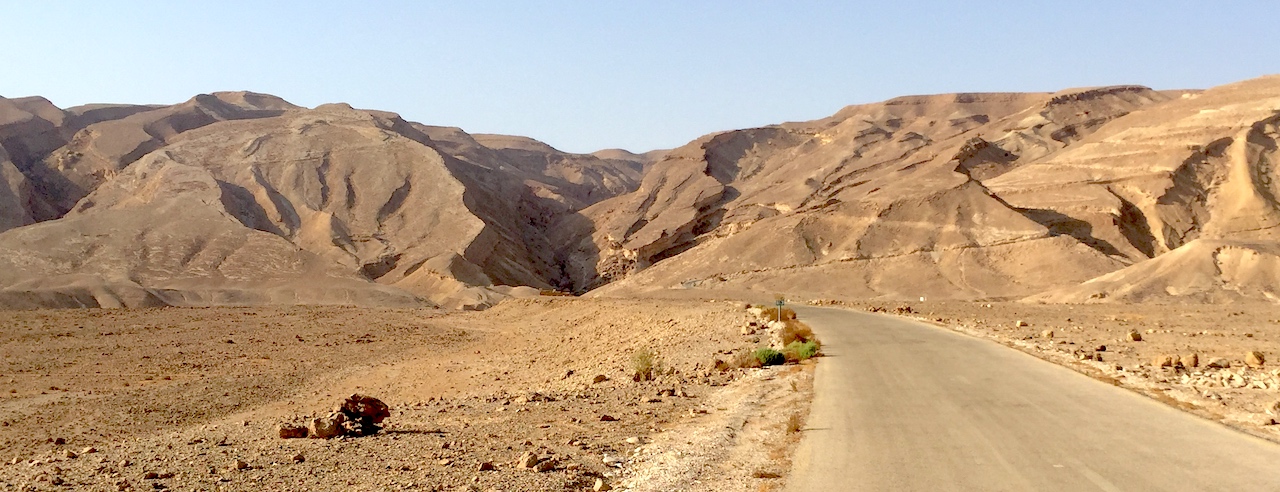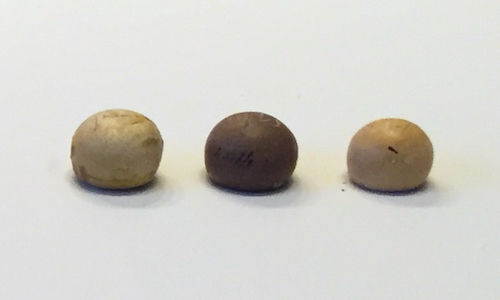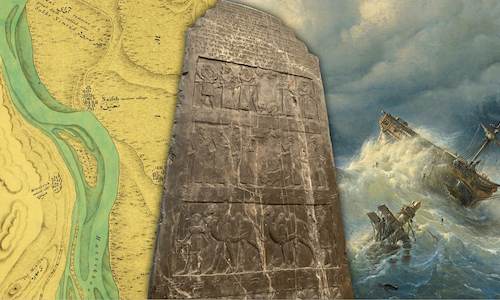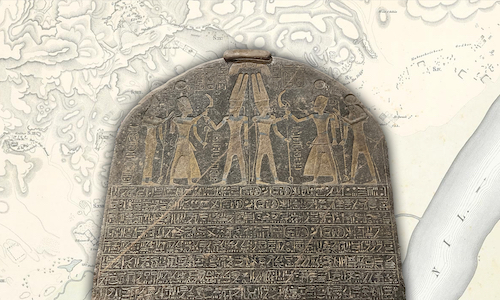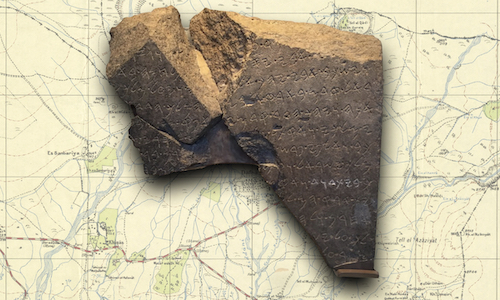Israelite Origins: Working backwards
Up to now in this series we’ve been slaughtering some sacred cows: claims of biblical dates for the Exodus and subsequent conquest of Canaan, claims that the scriptural narrative of the Israelite conquest matches the archaeological record, and claims that the bible gives us a coherent narrative on where the Israelite people came from.
Scripturally speaking, we’re left with practically nothing. So, we’re going to look at the archaeological record (well, at least what scholars tell us about it) and see what we can work out from there.
Let’s start by following the logic laid out by Miller1, Noll2, and Mazar3:
- Almost4 every relevant scholarly expert agrees that the people living in the Canaanite highlands in the Iron II period (i.e. ~1000-586 BCE) were Israelites.
- There is “direct continuity from the Iron I highlands to Iron II Israel and Judah in pottery, settlements, architecture, burial customs, and metals”5. The continuity is not limited just to material culture, but the Iron I Israelites “were the direct biological ancestors” of the Iron II Israelites.6
- Therefore, the ancestors of Iron II Israelites living in the Iron I period were the early Israelites; and there’s no need to refer to them as “Proto-Israelite” either.
That seems pretty sound.
The obvious question springs to mind: what’s all the fuss about these Iron I Israelites for then?
Here’s why: though there’s disagreement amongst the relevant scholarly experts over many aspects of the topic of Israelite origins, there’s one point on which pretty much everyone agrees. As Dever writes,
All authorities today agree that the major break in the archaeological sequence in Palestine that would have to be correlated with a shift from “Canaanite” to “Israelite” culture occurred at the end of the Bronze Age, ca. 1250–1150 B.C.7
So, according to “all authorities”, Israelite origins in Canaan are to be looked for around the transition between the Late Bronze Age and Iron Age I. And Dever for all his entertaining bravado is right – in recent times scholars in the relevant fields seemingly all agree that the Late Bronze Age/Iron Age I boundary is where Israelite origins should be sought. Let’s take a look at two examples, starting with Mazar:
Intensive archaeological surface surveys revealed an entirely new settlement pattern in Iron Age I. Hundreds of new small sites were inhabited in the mountainous areas of the Upper and Lower Galilee, in the hills of Samaria and Ephraim, in Benjamin, in the northern Negev, and in parts of central and northern Transjordan. Much of this activity can be related to Israelite tribes, though the ethnic attribution in some of these regions is still questionable.8
Finkelstein tells the same story:
The discovery of the remains of a dense network of highland villages—all apparently established within the span of a few generations—indicated that a dramatic social transformation had taken place in the central hill country of Canaan around 1200 BCE. There was no sign of violent invasion or even the infiltration of a clearly defined ethnic group. Instead, it seemed to be a revolution in lifestyle. In the formerly sparsely populated highlands from the Judean hills in the south to the hills of Samaria in the north, far from the Canaanite cities that were in the process of collapse and disintegration, about two-hundred fifty hilltop communities suddenly sprang up. Here were the first Israelites.9
Three of the top archaeologists to have worked in Israel agree that the Late Bronze – Iron I boundary is where the archaeological evidence places the time of Israelite origins.
We’ll get into the ‘settlement pattern’ mentioned above, but first we need a bit of historical context. In the next post we’ll look at what was happening in Canaan and the surrounding area in the lead up to this period in order to set the scene for the emergence of the early Israelites.
Featured image
Ma’aleh Akrabim, on the south eastern border of biblical Canaan: Nu 34:4 “…your boundary shall turn south of the ascent of Akrabbim…”
Footnotes
-
“There is direct continuity from the Iron I highlands to Iron II Israel and Judah in pottery, settlements, architecture, burial customs, and metals (see, among other things, the extensive literature by W. Dever and I. Finkelstein on this issue). So whatever the Iron I highlanders called themselves, by their continuity with Iron II they were nevertheless “those elements that were not yet Israel, but which went into or led up to the creation of Israel” (Thompson 1987:33).” Robert D. Miller II, Chieftains of the Highland Clans: A History of Israel in the Twelfth and Eleventh Centuries B.C. (Grand Rapids, MI; Cambridge, U.K.: William B. Eerdmans Publishing Company, 2005), 1–2. ↩
-
“The most reasonable hypothesis for equating the Iron Age I highland villages with early Israel is simple logic. Merneptah fought an Israel in the Late Bronze Age that seems to have been located either in the Jezreel Valley or the highlands. Iron Age II Assyrian inscriptions (to be discussed in Chapter 8) mention a Kingdom of Israel that was located in the highlands and the Jezreel. In between these eras, one finds the highland villages of Iron Age I. Therefore, according to some scholars, they must be the early Israelite settlements. If they were not Israelite, they were ‘Proto-Israelite’, a term that has caught on with a variety of historians. That means that they were the direct biological ancestors of the people who first began to identify themselves as Israelites. Of course, biology does not equal ethnic identity, but research shows that ethnicity often follows biological lines because people tend to identify with the group into which they were born. So the hypothesis is logical from a humanist historian’s point of view, even if unverifiable from a positivist’s perspective.” K. L. Noll, Canaan and Israel in Antiquity: An Introduction (vol. 83; The Biblical Seminar; New York: Sheffield Academic Press, 2001), 162–163. ↩
-
“The continuity between many of these sites and later Israelite towns and villages of the monarchic era legitimizes the definition of these settlers as Israelites, as I have maintained since I excavated the site of Giloh in 1978 (Mazar 1981; 1985; 1990a), and as have many other scholars. The term “Proto-Israelites” introduced by Dever (e.g., 1992: 103; 1995: 72) and adopted by others to designate the inhabitants of these sites is in my view superfluous.” Amihai Mazar, “Remarks on Biblical Traditions and Archaeological Evidence Concerning Early Israel,” in Symbiosis, Symbolism, and the Power of the Past: Canaan, Ancient Israel, and Their Neighbors from the Late Bronze Age through Roman Palaestina (ed. William G. Dever and Seymour Gitin; Winona Lake, IN: Eisenbrauns, 2003), 87. ↩
-
I have very little time for ‘minimalists’ – they’ll be ignored on this blog to the same degree that they are in academia. ↩
-
Op. cit., Miller. ↩
-
Op. cit., Noll. ↩
-
William G. Dever, Who Were the Early Israelites and Where Did They Come From? (Grand Rapids, MI; Cambridge, U.K.: William B. Eerdmans Publishing Company, 2006), 8. ↩
-
Amihai Mazar, Archaeology of the Land of the Bible 10,000-586 B.C.E. (New Haven; London: Yale University Press, 1990), 334. ↩
-
Israel Finkelstein and Neil Asher Silberman, The Bible Unearthed (Free Press, 2001), 107. ↩
